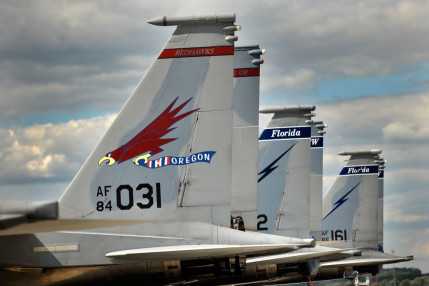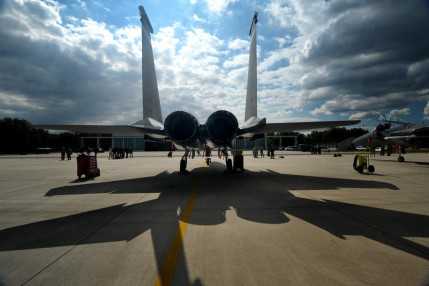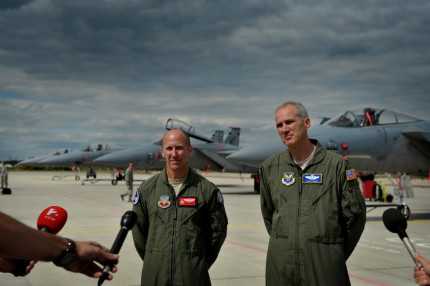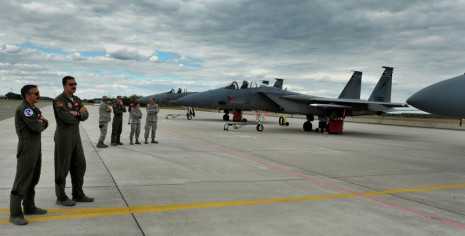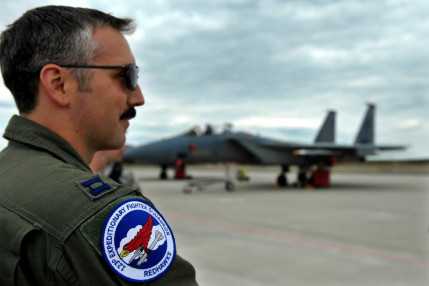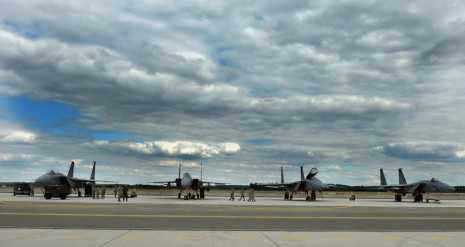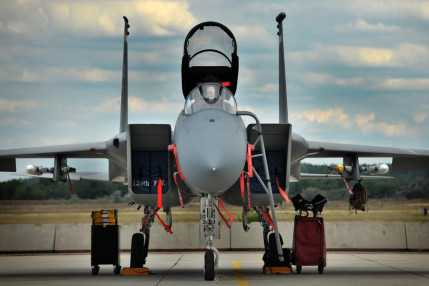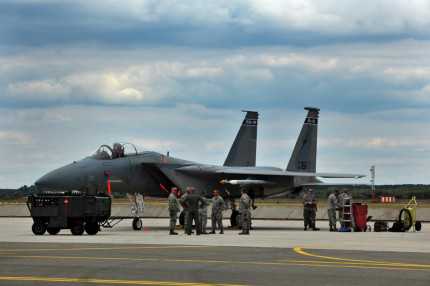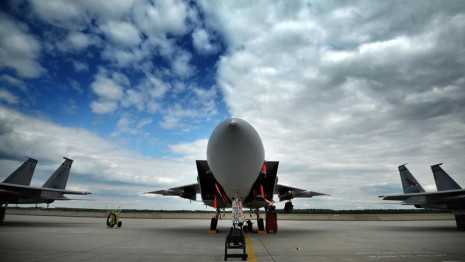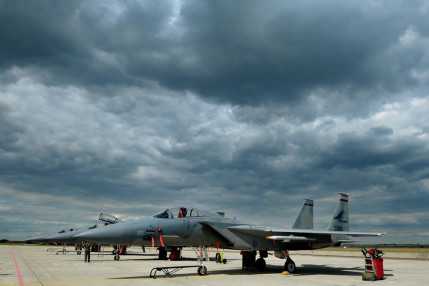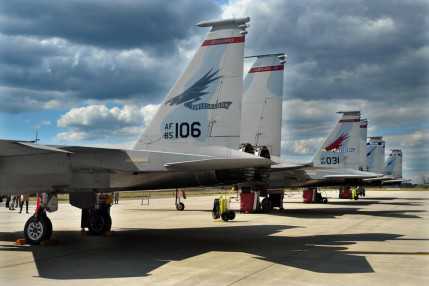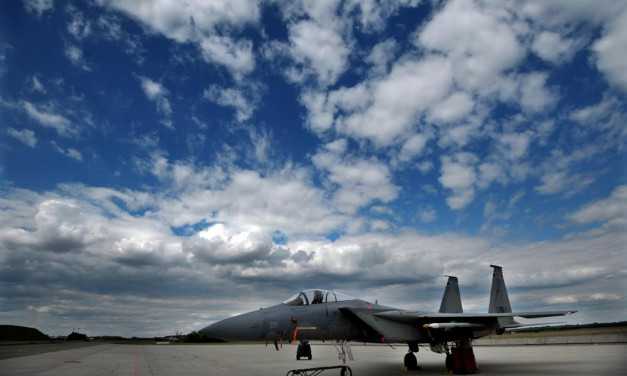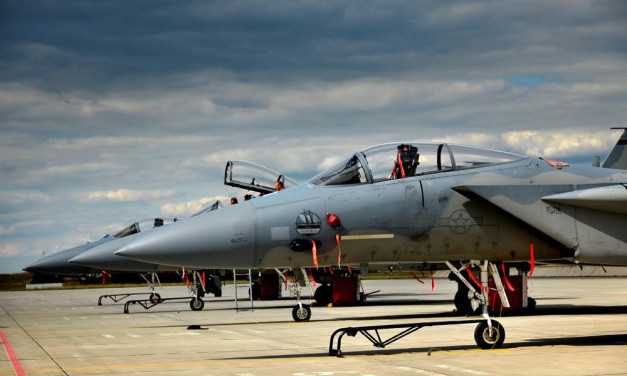Eagles in Kecskemét
Szöveg: Balázs Trautmann | 2015. szeptember 10. 9:00Two F-15C Eagle fighters of the Florida Air National Guard and another two of the Oregon Air National Guard have been hosted at the HDF 59th “Dezső Szentgyörgyi” Air Base since September 4. Forming part of NATO’s Atlantic Resolve capability enhancement package, the aircraft landed on the Kecskemét tarmac flying from the 71st Air Base of the Romanian Air Force in Câmpia Turzii, where they have been stationed for two months.
Galéria
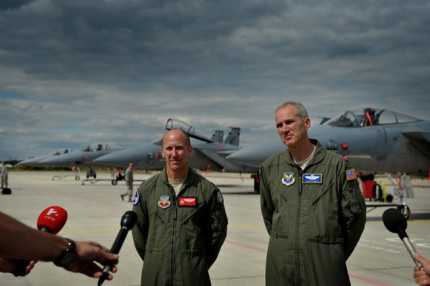
We are informed that the US and Hungarian aircraft are cooperating in the airspace of Hungary to practice air policing tasks.
Armed with practice rockets, the fighters were introduced to the press on Tuesday, September 8. The journalists’ questions were answered by US Air Force attaché Col. Steven J. Jantz and Lt.-Col. David Christensen, the commander of the formation that has flown to Kecskemét. Col. Steven J. Jantz told us that the United States has been cooperating with NATO for years, so the current practice in Kecskemét is just a step in this long-running process, which is aimed at training and joint development. As he said, they are happy to be able to carry on this process in cooperation with the Hungarian Air Force.
Lt.-Col. David Christensen pointed out that the primary objective of the practice is to develop interoperability between the two air forces. It provides both partners with an opportunity to see how the other is working in practice, so that the two air forces can better cooperate in potential conflict situations in the future.
Of course, the greatest novelty for the Americans is the JAS-39EBS Gripen aircraft. As Lt.-Col. Christensen told us, they did not have a chance to fly the two-seater Gripen, but they were allowed to get into the cockpit and take a close look at them. It is a good thing that they can get to know the advantages and limits of the Hungarian fighter planes, and likewise, the Hungarian pilots can get to know the similar characteristics of US fighters, so both partners can learn from it, he added.
During the training flights, they conduct air combat maneuvering with one-on-one dogfights. But they also have opportunity to fly missions armed with long-range air combat missiles in pairs. For the first time, the fighters and pilots of the two countries will “engage each other" in Hungarian airspace on Wednesday, September 9, and the lieutenant-colonel looks forward to the air combat practice.
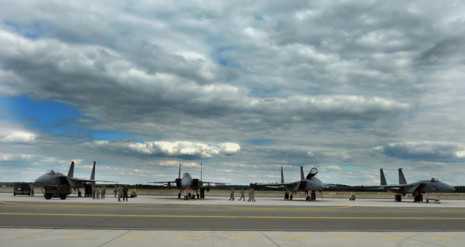
As Christensen added, the same goes for the Hungarian pilots who like to fly at least as much as the Americans do. The lieutenant colonel expects the Hungarian pilots to be able to fly the Gripens at least as effectively as the Americans fly the Eagles. Of course, they have already discussed the Hungarian training methods and tasks in detail, and it turned out that the fighter pilots of the two countries have very similar training programs.
Col. Jantz pointed out that this is precisely one of the key parts of such multinational training events. On these occasions, the participating countries have opportunity to see the flying methods of their partner nations. Because everybody can learn from the others, the result can only be positive, as they achieve a higher level of cooperation.
Besides the four F-15Cs, the American partners sent seven fighter pilots and around 60 ground crewmembers to participate in the Kecskemét training practice.
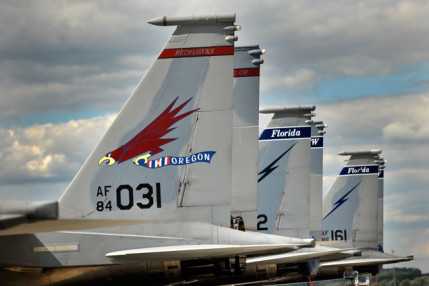
Photo: Tünde Rácz
